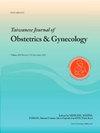阴道镜引导下二氧化碳激光汽化疗法对宫颈上皮内瘤变周边病变的影响
IF 2
4区 医学
Q2 OBSTETRICS & GYNECOLOGY
引用次数: 0
摘要
激光汽化术治疗宫颈上皮内瘤变(CIN)比锥切术创伤更小。根据经验,激光汽化术治疗 CIN 的效果取决于阴道镜检查结果,尤其是病灶的定位。在这项研究中,我们试图找出激光汽化治疗结果的相关因素。材料和方法我们回顾性调查了2018年至2021年期间在西川妇女健康诊所接受激光汽化治疗的290例CIN(CIN2,n = 180;CIN3,n = 110)。所有治疗均在阴道镜视野(n = 172)或阴道窥器直视(n = 118)下使用二氧化碳激光进行。结果使用逻辑回归模型进行多变量分析后发现,影响治疗成功的独立因素包括术前高危人乳头瘤病毒感染状况、CIN等级、宫颈外围是否存在CIN病变以及所使用的手术方法。与使用阴道窥器直视相比,阴道镜引导下的激光汽化术将治疗失败的风险降低了 84%(几率比 0.16,95% 置信区间 0.06-0.46;P = 0.001)。对于宫颈外围的病变,大多数治疗失败的病例都发生在没有阴道镜引导的组别中(p = 0.031)。建议在阴道镜视野下进行激光汽化治疗外周 CIN 病变。本文章由计算机程序翻译,如有差异,请以英文原文为准。
Impact of colposcopy-guided carbon dioxide laser vaporization therapy on peripheral cervical intraepithelial neoplasia lesions
Objective
Laser vaporization is less invasive than conization for cervical intraepithelial neoplasia (CIN). The outcome of laser vaporization for CIN is empirically known to depend on the colposcopic findings, especially localization of the lesion. In this study, we sought to identify factors involved in the outcome of laser vaporization.
Materials and methods
We retrospectively investigated 290 cases of CIN (CIN2, n = 180; CIN3, n = 110) treated with laser evaporation at Nishikawa Women's Health Clinic between 2018 and 2021. All treatments were performed using a carbon dioxide laser under either colposcopic vision (n = 172) or direct vision using a vaginal speculum (n = 118). Risk factors were statistically examined for cure rate after treatment.
Results
Multivariate analysis using a logistic regression model identified independent factors affecting the success of treatment to be high-risk human papillomavirus infection status preoperatively, CIN grade, presence of CIN lesions at the periphery of the cervix, and the surgical method used. Colposcopy-guided laser vaporization reduced the risk of treatment failure by 84% (odds ratio 0.16, 95% confidence interval 0.06–0.46; p = 0.001) compared with direct vision using a vaginal speculum. For lesions at the periphery of the cervix, most of the treatment failures were in the group that was not guided by colposcopy (p = 0.031).
Conclusion
The presence of a peripheral CIN lesion was suggested to be a risk factor for treatment failure. Laser vaporization under colposcopic vision is recommended for treatment of peripheral CIN lesions.
求助全文
通过发布文献求助,成功后即可免费获取论文全文。
去求助
来源期刊

Taiwanese Journal of Obstetrics & Gynecology
OBSTETRICS & GYNECOLOGY-
CiteScore
3.60
自引率
23.80%
发文量
207
审稿时长
4-8 weeks
期刊介绍:
Taiwanese Journal of Obstetrics and Gynecology is a peer-reviewed journal and open access publishing editorials, reviews, original articles, short communications, case reports, research letters, correspondence and letters to the editor in the field of obstetrics and gynecology.
The aims of the journal are to:
1.Publish cutting-edge, innovative and topical research that addresses screening, diagnosis, management and care in women''s health
2.Deliver evidence-based information
3.Promote the sharing of clinical experience
4.Address women-related health promotion
The journal provides comprehensive coverage of topics in obstetrics & gynecology and women''s health including maternal-fetal medicine, reproductive endocrinology/infertility, and gynecologic oncology. Taiwan Association of Obstetrics and Gynecology.
 求助内容:
求助内容: 应助结果提醒方式:
应助结果提醒方式:


